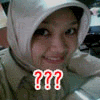(05-08-2013) Ronnie Cutrone, a Man of Another, Cooler City [ H0us3 ]
>> Sunday, August 4, 2013

Ronnie Cutrone, a Man of Another, Cooler City Aug 5th 2013, 05:02

Timothy Greenfield-Sanders, collection of MOMA
Ronnie Cutrone at the epicenter in 1985 in "The New Irascibles: Artists 2."
When the artist Ronnie Cutrone died late last month, at 65 and apparently of natural causes, a quirky and marginal figure slipped off the cultural stage, taking with him a large and vital hunk of late-20th-century New York history.
Most celebrated among Mr. Cutrone's eclectic accomplishments was a 10-year stint as an assistant to Andy Warhol, a number of whose early pictures he helped realize with brush, or in the metallic "Oxidations" paintings, his bodily fluids.
He went on, though, to enjoy a successful career as a proponent of the cartoonlike post-Pop school of the 1980s; to help start Warhol's Interview magazine; to become a nightclub impresario; a producer of memorably odd performance art; to feature, lightly disguised, in fictional works of the '80s, like Tama Janowitz's "Slaves of New York," whose lead character, Stash, was said to have been modeled on him; to fall into drug addiction; to become a saint of the sobriety movement; and finally, to lapse again into addiction during the last years of his life.
From the first, the Brooklyn mama's boy who left high school and crossed the river to Manhattan to find work at Warhol's Factory gave evidence of a singular gift and cultural contribution: an innate ability to capture and transmit the essence of cool. Canny and shape shifting, Mr. Cutrone moved fluidly through the worlds of the city — high and low, gay and straight, criminal and licit, Bowery to Park Avenue.
Among Mr. Cutrone's first paying jobs was as a go-go dancer in the multimedia events Warhol staged at the Dom club on St. Marks Place, where now-fabled figures like Edie Sedgwick and the Velvet Underground were introduced. The umbrella rubric for these ragtag events was the Exploding Plastic Inevitable; Mr. Cutrone was something of an exploding plastic inevitable himself.
"That was the time when all that was possible in New York," the performance artist and sometime Warhol superstar Penny Arcade said, referring to a social fluidity largely absent today. "A lot of us who were at the Factory were very young."
And if a lot of the very young and ornamental people drifting through Warhol's Factory held for themselves no fixed ambitions, that was fine because in the laissez-aller atmosphere of 1960s Manhattan an M.B.A. or a five-year plan was hardly required.
"What no one seems to remember about Andy," Ms. Arcade said, "is that he loved three things: beauty, fame and hard work." Fundamental to an understanding of Mr. Cutrone, Ms. Arcade added, "is that Ronnie was one of a very, very, very small number of people who worked with Warhol who didn't expect him to be some kind of magic daddy. Ronnie wasn't just hanging around the Factory being cute."
Mr. Cutrone had, the novelist and critic Gary Indiana said, "a sincerity and work ethic uncharacteristic among the Warhol people."
And like Warhol himself, as Ms. Arcade noted, "Ronnie never stopped being on the make."
To be on the make in that era was a fine credential, just as being a provocateur was a full-time job for many in Warhol's circle (Ondine, Viva, René Ricard).
"Ronnie was a bad boy," Richard Butler, the lead singer of the Psychedelic Furs, said last week from Florida, where the band was touring. "He would grow visibly bored if he wasn't being provocative," Mr. Butler added. "You would sit in conversation and he'd say the most outrageous things he didn't necessarily believe."
As the best raconteurs do, Mr. Cutrone treated facts as flexible elements, although surprisingly often the tall tales he related turned out to have been true.
In a series of interviews filmed by the photographer Roger Moenks for a never-completed movie titled "Shooting Milk," Mr. Cutrone talks of knife-slashing episodes with the Egyptian Kings (a Brooklyn gang of which he may or may not have been a member), and of reviving overdosed amphetamine junkies by injecting them with milk.
According to a Warhol-dedicated Web site, warholstars.org, Mr. Cutrone met Andy Warhol when the two collided on a stairwell at a party while simultaneously attempting to step over a supine Bob Dylan. Mr. Cutrone tells of an abortive effort to "turn" gay, as those around him were, before deciding he would be better off as a "lesbian" to catch all the girls. He reminisces about hanging out at the Ramrod, a leather bar in Greenwich Village, with his then-wife Gigi, because it allowed him easy access to the transvestites he considered the most tantalizing citizens of New York.
"At 3 in the morning," Mr. Cutrone said, "I would chase a transvestite down the street, yelling, 'You're wonderful; we want you to pose for Warhol.' "
The strategy succeeded. In "Shooting Milk" the transvestites he procured for Warhol can be seen posing for the Polaroids Warhol turned into a series of paintings called "Ladies and Gentlemen."

![]()


